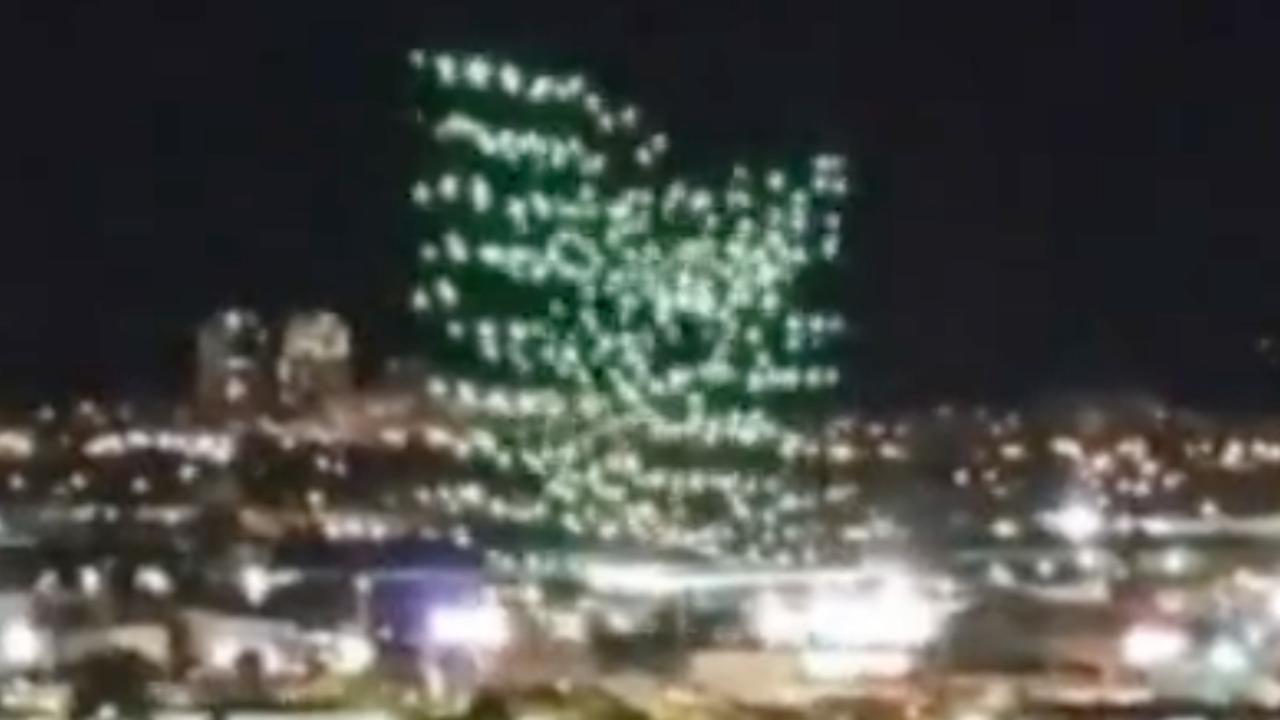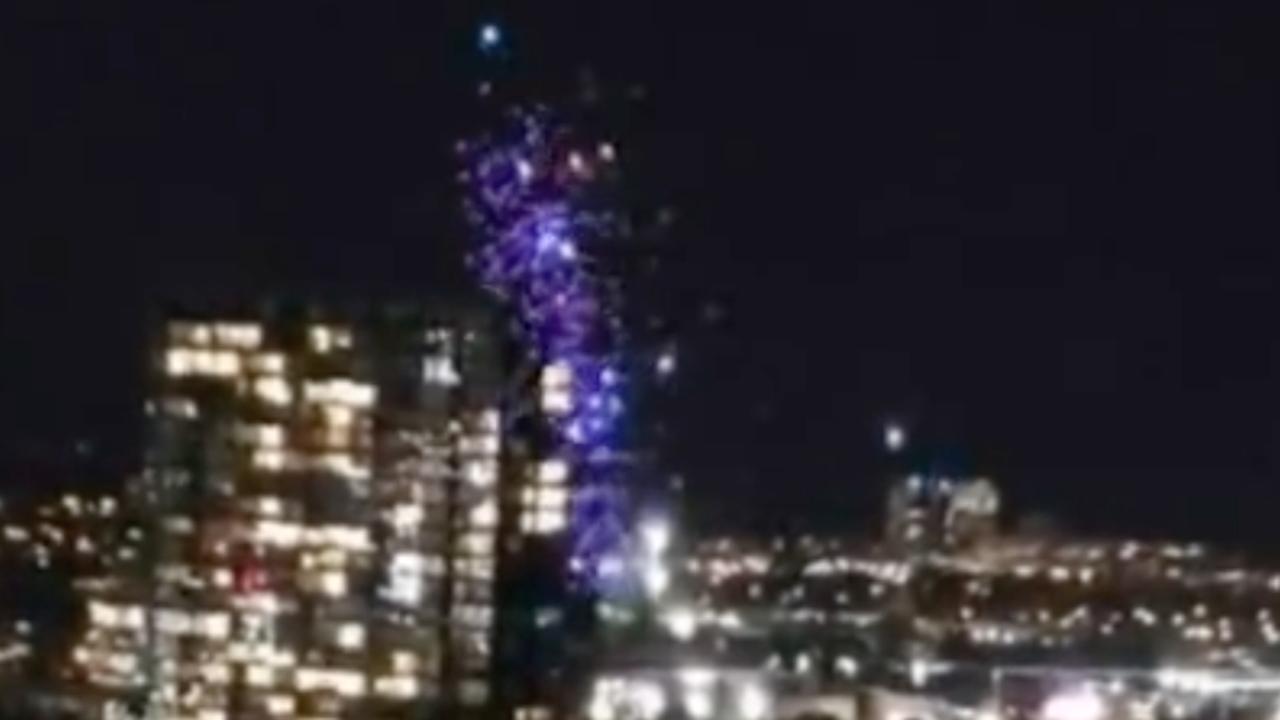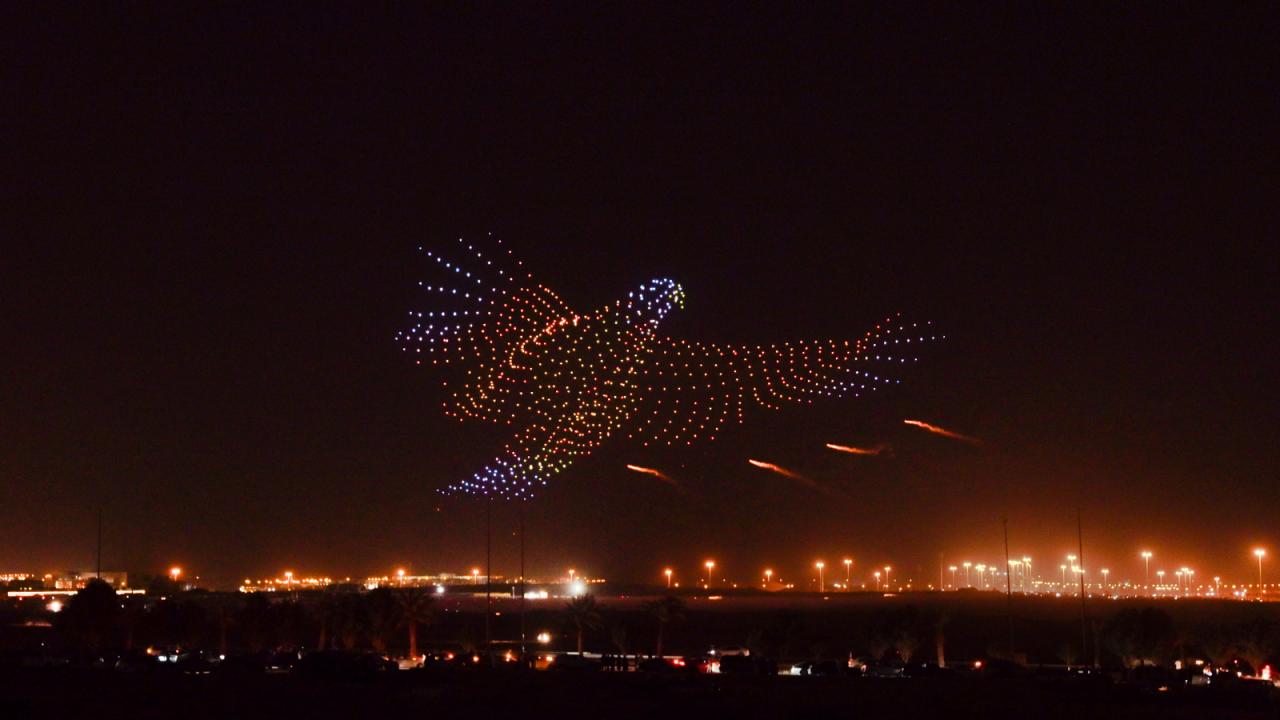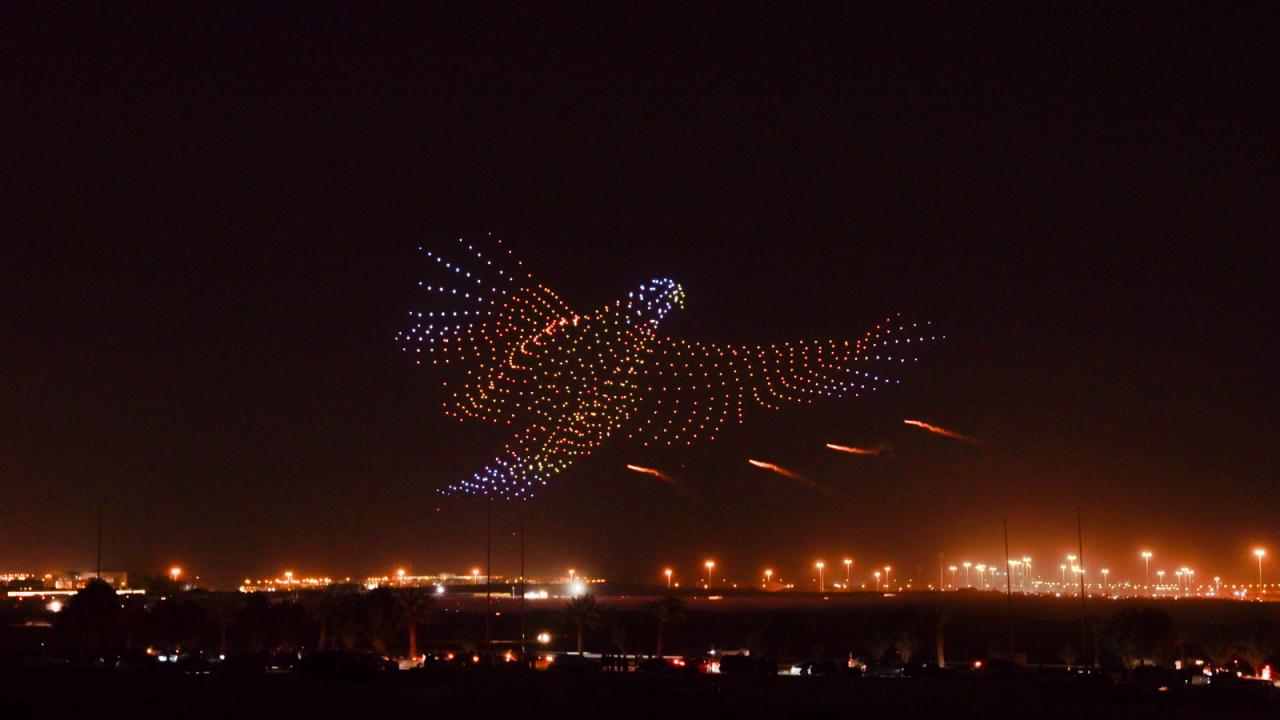Orlando drone show malfunction dominated headlines recently, leaving spectators and organizers alike stunned. This incident, a jarring disruption of a meticulously planned spectacle, highlights the inherent risks and complexities of large-scale drone displays. This analysis delves into the event, exploring the potential causes, safety protocols, and future implications for the burgeoning field of drone entertainment.
From initial reports of erratic flight patterns to the subsequent investigation and analysis of potential contributing factors, this event serves as a crucial case study. We will examine the technological, environmental, and human elements that may have played a role, ultimately aiming to understand how such malfunctions can be prevented in the future.
The Orlando Drone Show Malfunction
A recent drone show in Orlando experienced a significant malfunction, resulting in a spectacle that quickly transitioned from awe-inspiring to concerning. This incident highlights the complexities and potential risks associated with large-scale drone displays, prompting a closer examination of safety protocols, technological limitations, and regulatory frameworks governing such events.
The recent Orlando drone show malfunction highlighted the complexities of large-scale aerial displays. It made me think about the logistical precision required for other large-scale events, such as tracking Santa’s flight, which you can learn more about by checking the norad santa tracker phone number. The Orlando incident underscores the need for robust safety protocols, mirroring the importance of precise navigation for Santa’s journey.
The Orlando Drone Show Incident: Initial Reports
Reports indicated a widespread malfunction during a nighttime drone show in Orlando, Florida, on [Insert Date and Time]. The precise location needs further specification, but it is understood to have been a prominent outdoor venue known for hosting large-scale events. The malfunction involved a significant number of drones exhibiting erratic behavior, deviating from their programmed flight paths.
Initial eyewitness accounts described a chaotic scene as drones strayed from their formations, with some experiencing complete loss of control, while others collided mid-air. The show was abruptly halted, leaving spectators both surprised and concerned. A timeline of events, based on available reports, would likely show a period of normal operation, followed by a rapid escalation of malfunctions within a short timeframe, culminating in the immediate cessation of the show.
Types of Malfunctions Experienced
The malfunctions observed ranged in severity. Some drones displayed minor deviations from their programmed paths, while others experienced complete loss of control, plummeting or spinning uncontrollably. Mid-air collisions were reported, resulting in some drones falling from the sky. Accounts vary in the precise number of drones affected and the nature of the malfunctions, but the consensus points to a widespread system failure rather than isolated incidents.
The severity of the malfunctions could be categorized into three levels: minor deviations (minimal impact on the show’s visual effect), major deviations (significant disruption to the show’s choreography), and catastrophic failure (complete loss of control, mid-air collisions, and potential damage).
Potential Causes of the Malfunction

Several potential causes warrant investigation. Technical issues, such as software glitches in the control system or hardware failures within individual drones, are prime suspects. GPS interference, either from external sources or internal system errors, could have disrupted the drones’ navigational capabilities. Furthermore, environmental factors, like unexpected strong winds or electromagnetic interference, might have played a role.
A hypothetical scenario could involve a software glitch in the central control system initiating a cascade effect. This glitch could have disrupted the GPS signals received by multiple drones, leading to loss of position data. The resulting disorientation and subsequent attempts to correct the course could have resulted in mid-air collisions and uncontrolled descents.
The recent Orlando drone show malfunction highlights the inherent risks in large-scale drone displays. Such technological failures underscore the need for robust safety protocols, a point further emphasized when considering the sophisticated monitoring systems, like the cobequid pass camera , used in other applications requiring precise aerial surveillance. Ultimately, the Orlando incident serves as a reminder of the ongoing challenges in ensuring flawless drone operations.
Safety Protocols and Procedures
Large-scale drone shows typically involve stringent safety protocols, including redundancy in control systems, fail-safe mechanisms to prevent collisions, and emergency shutdown procedures. However, the Orlando incident raises questions about the adequacy of these protocols and their implementation. A thorough review of the procedures employed is necessary to determine whether existing measures were sufficient or whether improvements are needed.
| Current Protocol | Suggested Improvement |
|---|---|
| Redundant control systems | Enhanced redundancy with independent backup systems and failover mechanisms |
| Emergency shutdown procedures | Faster and more reliable emergency shutdown protocols with automated fail-safes |
| Collision avoidance systems | Advanced AI-powered collision avoidance with real-time obstacle detection and path planning |
| Pre-flight checks and inspections | More rigorous pre-flight checks and inspections, including environmental assessments |
Impact on Spectators and the Event
Spectators initially experienced awe and wonder, but this quickly shifted to concern and alarm as the malfunction unfolded. The sudden halt of the show left many disappointed and potentially worried about the safety of the drones and the people below. The long-term impact on the event organizers and drone operators’ reputation depends on the transparency of the investigation and the actions taken to address the issue.
A comprehensive investigation and clear communication will be crucial to mitigate any lasting negative effects.
Witness accounts are likely to describe a range of emotions: initial excitement, followed by growing unease as the drones’ behavior became erratic, and finally, relief that no serious injuries occurred. The sudden transition from a captivating display to a chaotic scene would undoubtedly leave a lasting impression.
Post-Incident Response and Investigation, Orlando drone show malfunction

Following the malfunction, event organizers likely initiated an immediate shutdown of the show and ensured the safety of spectators. Authorities were notified, and an investigation was launched to determine the root cause of the malfunction. This process likely involved analyzing flight data, inspecting the drones, and reviewing the control system software and hardware. Remedial actions, such as software updates, hardware replacements, and revised safety protocols, would be implemented to prevent future incidents.
Drone Technology and Future Implications
The Orlando incident underscores the need for further technological advancements in drone show safety and reliability. Improvements to drone control systems, including enhanced GPS accuracy, more robust communication networks, and advanced AI-powered collision avoidance, are crucial. Improved battery technology and redundancy in power systems are also important factors to consider.
The recent Orlando drone show malfunction highlights the inherent complexities of large-scale drone displays. Ensuring flawless synchronization and reliable performance is crucial, and companies like Sky Elements, whose innovative drones you can explore at sky elements drones , are at the forefront of developing advanced technologies to mitigate such issues. Ultimately, the Orlando incident underscores the need for continuous improvement in drone show technology and safety protocols.
A safer, more robust drone control system could be envisioned as a decentralized network, with each drone possessing a degree of autonomous decision-making capability. This system would incorporate real-time obstacle avoidance, redundancy in communication links, and a fail-safe mechanism that ensures controlled descent in case of communication loss or system failure. The system would also incorporate advanced weather sensors and predictive modeling to adapt flight paths to changing conditions.
Legal and Regulatory Aspects

Drone operations are governed by a complex set of legal and regulatory frameworks, designed to ensure safety and prevent accidents. Compliance with these regulations is paramount. The Orlando incident will likely trigger a review of existing regulations and potentially lead to stricter guidelines for large-scale drone shows. The potential legal ramifications could range from fines and operational suspensions to more serious consequences depending on the findings of the investigation and the extent of any damages or injuries.
The Orlando drone show malfunction serves as a stark reminder of the need for robust safety protocols and continuous technological advancements in the drone industry. While the immediate impact was a disrupted show and some audience disappointment, the long-term implications necessitate a thorough review of current practices and a commitment to improving drone technology and operational safety. Only through proactive measures can we ensure that future drone shows provide spectacular entertainment without compromising public safety.
Questions and Answers: Orlando Drone Show Malfunction
What was the estimated cost of the damage caused by the malfunction?
Precise figures on damages haven’t been publicly released, but estimates likely include repair or replacement costs for damaged drones, and potentially some compensation for disappointed spectators.
Were there any injuries reported as a result of the malfunction?
Thankfully, no injuries were reported among spectators or personnel.
What type of drones were used in the show?
Specific drone models involved haven’t been definitively confirmed in public reports. Further investigation would be required to obtain this information.
What legal actions, if any, are being considered?
Depending on the findings of the investigation and any determination of negligence, various legal actions could be pursued by affected parties, including spectators or the event organizers themselves.
